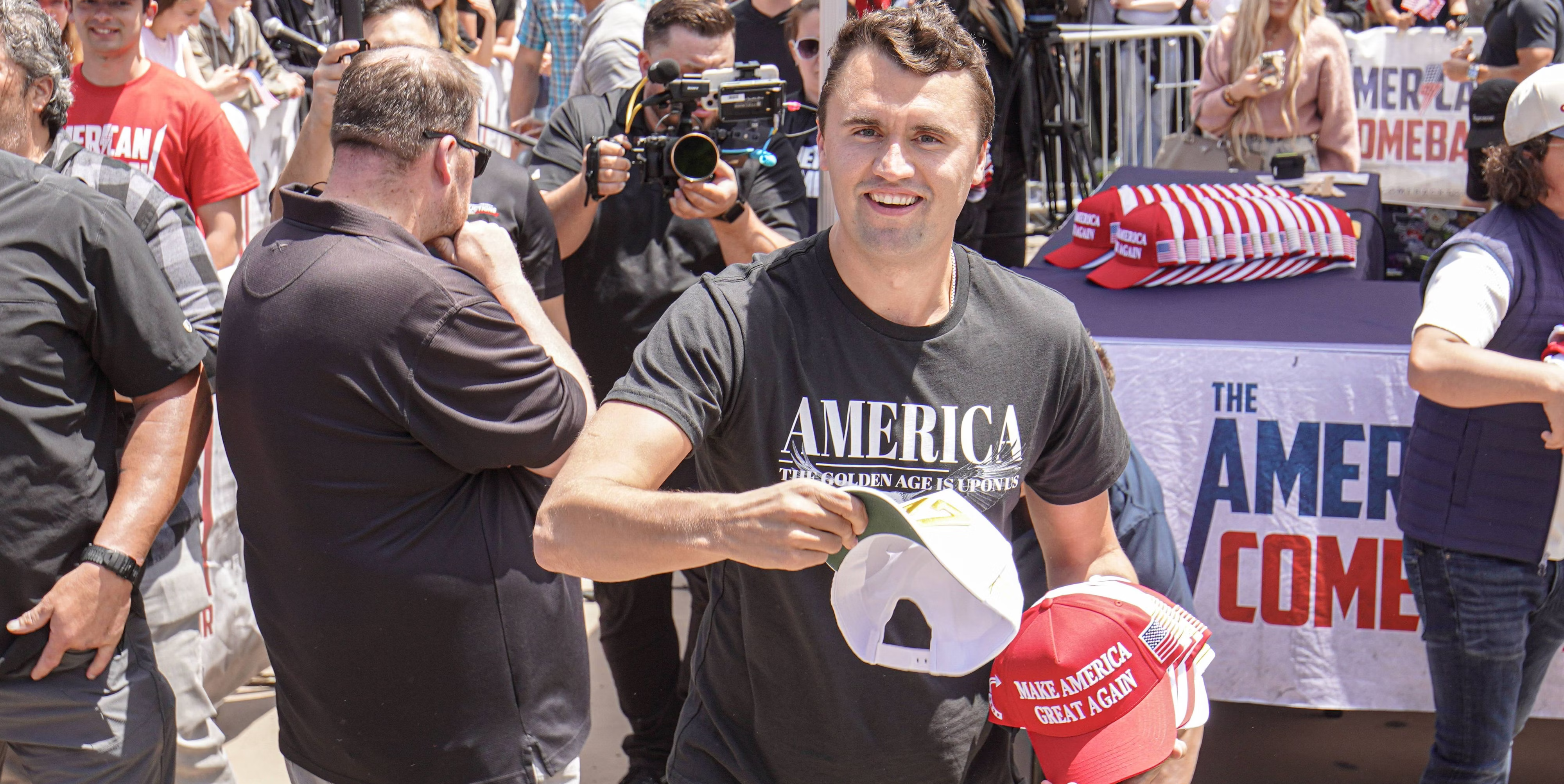Charlie Kirk, a well-known MAGA influencer, was assassinated Wednesday during a campus debate. The media keeps replaying the footage, denunciation after denunciation. The U.S. president, swearing to violently repress “the far left,” has only fanned the flames and fed the media frenzy. But no one dares say it outright: this live-broadcast killing is only the tip of the iceberg of what’s brewing on a global scale.
And it’s not only because of the wave of political violence sweeping the United States this year. A Democratic lawmaker killed in Minnesota, two Israeli consular staff gunned down, the Pennsylvania governor’s mansion set ablaze, a pro-Israel rally firebombed… a lot, in just a few months. But here’s the catch.
The media won’t say it, but political violence never falls from the sky. It grows out of social tensions, themselves fueled by economic crises and global conflicts.
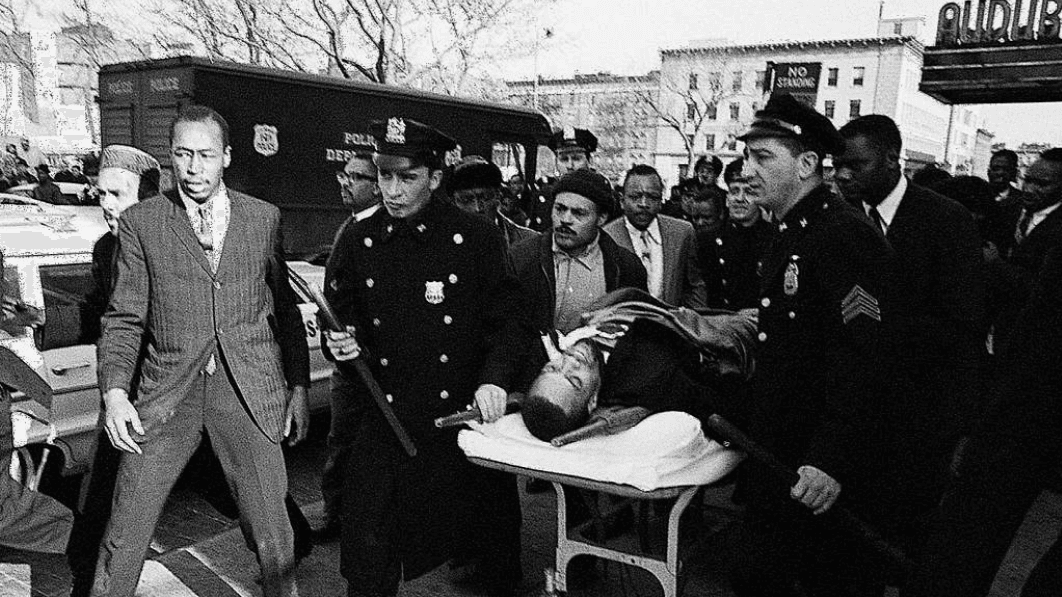
The 1960s and ’70s in the United States speak for themselves. Kennedy, Malcolm X, Martin Luther King… all assassinated in a country boiling over with strikes, civil rights struggles, and anti-war protests. In the background, the U.S.–USSR clash (Cuban crisis, Vietnam, etc.), then the inflation surge of the 1970s that further fueled social conflict.
Let’s go further. In the early 1990s, the University of Maryland’s terrorism database recorded about 1,000 political assassinations per year. By the end of the decade, only about a hundred remained. A sharp drop, coinciding with the near-uncontested dominance of the U.S. and its European allies over the global economy from 1990 to 2015.
But by 2015, the number was back up to 900. What happened?
China had had enough of being “the world’s workshop” and wanted to assert itself as a main power. Reassured by Beijing’s strength, Russia went on the offensive in Crimea and Ukraine, threatening U.S. economic hegemony.
Meanwhile, a handful of oligarchs bet on Trump, their champion. He had understood that Uncle Sam’s interests were threatened by China, and he wanted to fight it.
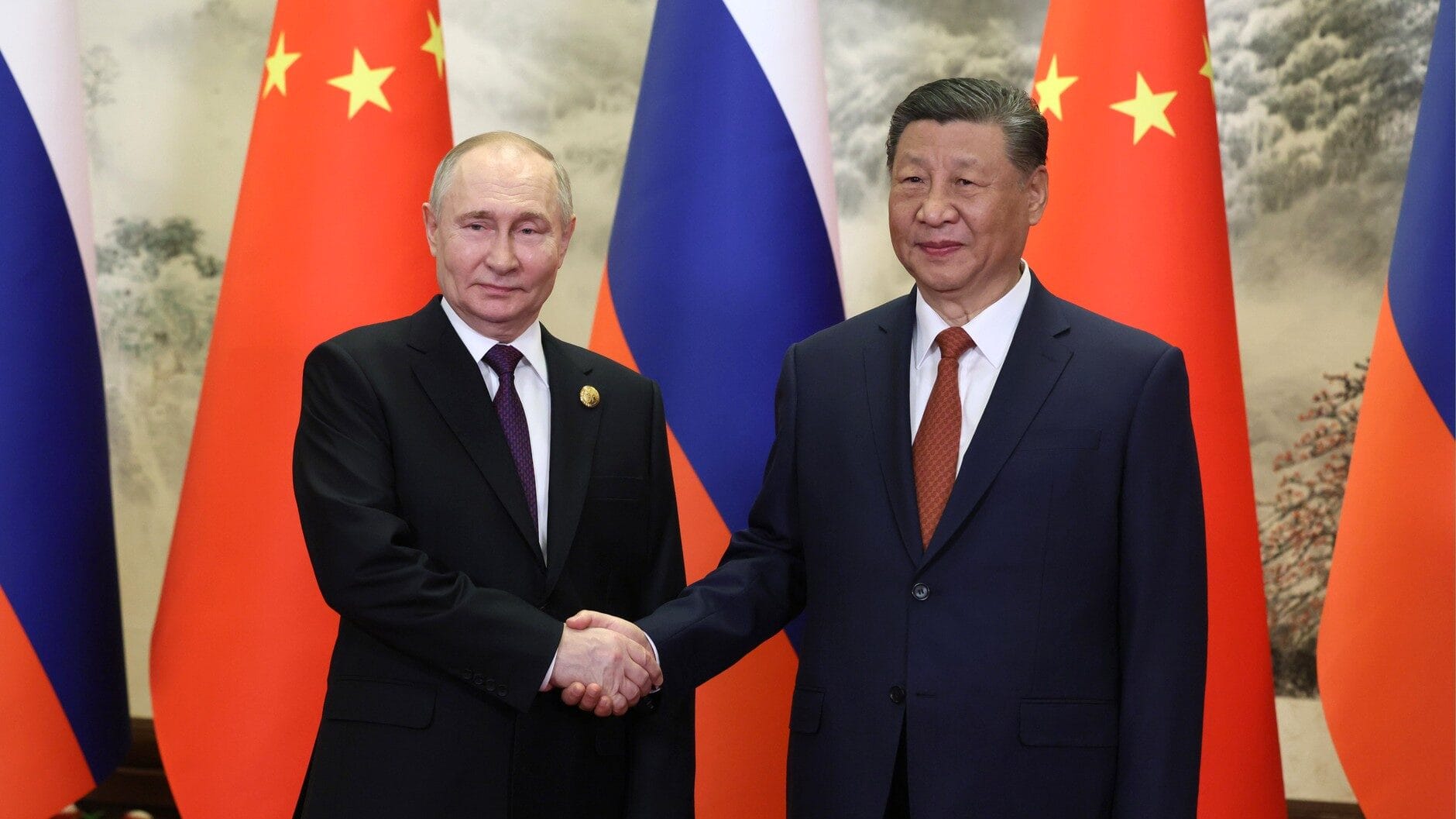
Add to this that after post-2008 austerity and instability, people were fed up. Some placed their hopes in identity or sectoral struggles (climate, feminism, LGBT rights, anti-racism). Others took refuge in conservative identitarianism (nation, anti-immigration, traditional family). Two opposite responses to the same despair, displaced from the economic terrain into the culture war.
It’s a mix of all this that we see today. And while highly significant, the assassination of Charlie Kirk has overshadowed several other troubling developments in recent days:
- At the end of August, Le Canard enchaîné revealed that the French government had asked its hospitals to prepare for a major conflict by March 2026. We’re talking about the possibility of a generalized war that could bring tens of thousands of injured soldiers to France.
- At roughly the same time, Washington started raising its tone against Venezuela. They deployed warships in the Caribbean, sinking a boat under the banner of the drug war. The U.S. accuses Maduro of fueling the northbound trade, despite a UN report saying Venezuela plays only a minor role. In response, Caracas mobilized 25,000 soldiers three days ago and announced the deployment of 4.5 million militiamen.
- On August 31 and September 1, Beijing and Moscow gathered around them a lineup of countries for a political and military summit: India, Pakistan, Iran, Vietnam, Indonesia, Turkey, Egypt, and about 15 others, mostly Asian. The West was not invited. Not yet a cast-iron alliance, but you can see the structure rising. China even marked it with a giant military parade, where Putin, Xi Jinping, Kim Jong Un, and Iranian president Masoud Pezeshkian marched side by side for the first time. The Center for a New American Security calls it “the axis of anti-American upheaval.”
- Meanwhile, the United States announced the construction of a mega-munitions plant in Manila, to allow easier intervention in the region.
- Early this week, tens of thousands of Nepali youth (in a country under Indian influence) toppled their government. They then physically attacked ministers and burned down several government buildings, including parliament.
- On Tuesday, Israel bombed Doha, the Qatari capital, directly implicating another country in its genocidal war. Qatar, supposedly a U.S. ally, called the attack “state terrorism.” One more fracture in global geopolitics.
- Between Tuesday night and Wednesday, a fleet of Russian drones crossed Polish airspace. Several were shot down. Warsaw immediately invoked NATO’s Article 4, an emergency meeting to prepare a response to what Polish Prime Minister Donald Tusk called “a large-scale provocation.” It’s not Article 5 yet, but you can see its shadow.
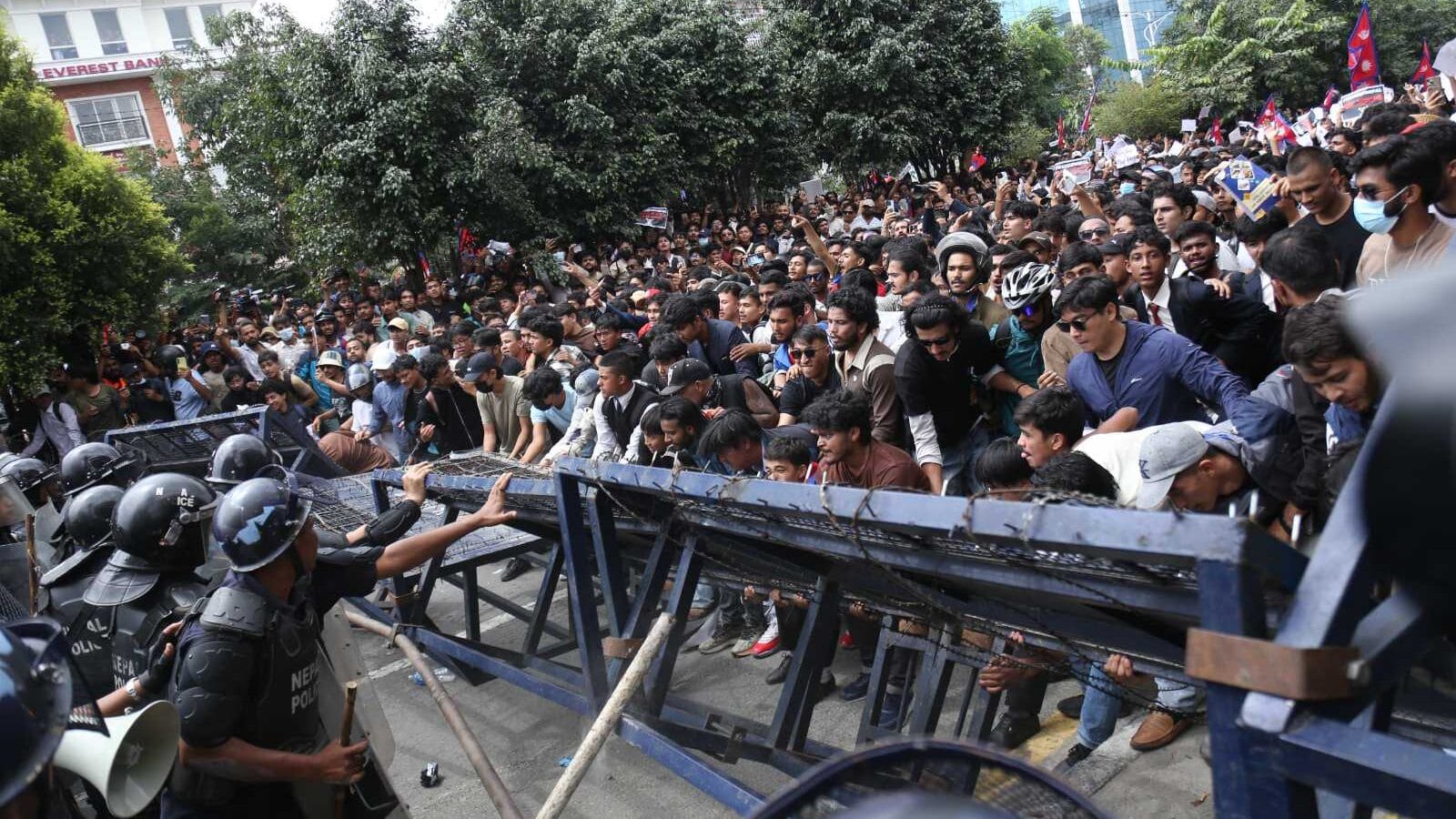
The puzzle pieces are aligning fast, too fast, pointing to a conflict that could be the largest since 1945. Will it break out? Impossible to say, but the hypothesis has never seemed more credible. As for the United States, it’s hard not to see the outlines of a 21st-century fascism taking shape.
The death of Charlie Kirk gives Trump the perfect pretext to crush opposition and “stabilize” the country by force, a classic of pre-war periods, from 1930s Germany to today. From the Oval Office, he promised to hunt down “each and every one of those” involved in “political violence,” from activists to “the organizations that fund and support it,” up to “those who go after our judges, law enforcement officials, and everyone else who brings order to our country.”
That’s chilling. Such wording can target anyone: someone defending a neighbor arrested by ICE, someone resisting strike repression, someone daring to voice an anti-establishment speech. And meanwhile, a president with autocratic leanings and his court are calling for the military occupation of cities, as they already did with the nation’s capital. It’s the basic handbook of a dictatorial power grab.
Let’s not believe Canada is safe. An American-style scenario is unlikely, but a world war would inevitably bring its share of repression here too. We must prepare for that and—whether one sees the threat as near or far—first and foremost prevent the Canadian state from plunging into a new international confrontation.
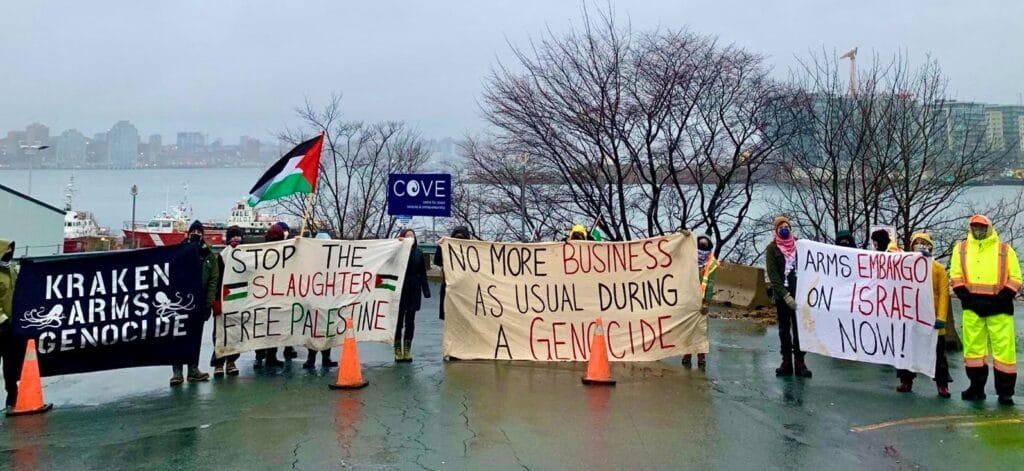
There is a vast reservoir of people angry at the status quo, hostile to war, and whose living conditions are eroding. But to mobilize them, we need to ask ourselves: why such potential, and yet so little mobilization lately?
The methods of mobilization and political trends since the early 2000s have carved a gap with ordinary people, a fracture, a total misunderstanding. But in the end, it’s always the same story. No matter how much we try to forget or blur the picture, reality always catches up. From the French Revolution to Nepal today, there is a constant: the true actor of change is the people, the masses.
Accepting that as reality demands a deep rethink, both tactically and strategically. It will require leaving comfort zones, stepping out of universities and intellectual circles that by definition remain cut off from the rest of the world. Accepting painful personal sacrifices, doing the boring, difficult work, working every single day without exception, building links and organizing committees from scratch.
To convince and activate the people, you have to get your hands dirty. Not endless coalitions that just talk, not protests against cars with 40 people, not theoretical journals handed out while shouting slogans from the early 20th century, not political campaigns that dodge basic organizing.
It’s time to leave the ivory tower and mobilize around the broadest possible popular anger and hope, not narrow interest groups. It’s time to roll up our sleeves, break with the lethargy of recent years, and dare to change—or we’ll soon regret it. If each of us accepts to commit, to question ourselves, to learn, destructive energy can become the basis of a better world.


